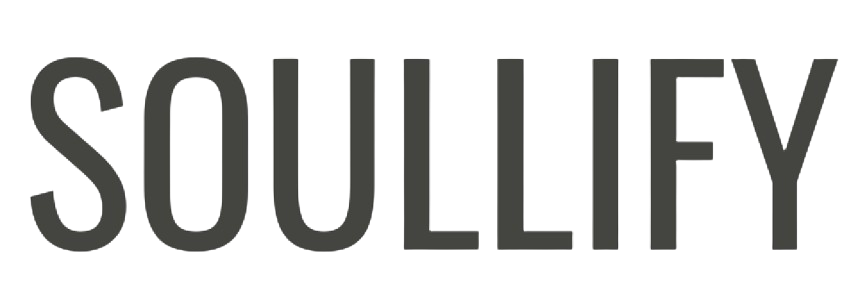Dive into the world of sound healing instruments and find out how these tools can elevate your spiritual practice. Explore the calming effects of gongs, singing bowls, and more to rejuvenate your mind and body.
Understanding Sound Healing
Sound healing utilizes various instruments and techniques to create vibrations that harmonize the mind and body, promoting relaxation and reducing stress. By tapping into certain frequencies, it helps calm anxiety, balance energy, and support overall well-being.
Basics of Sound Healing
In sound healing, specific frequencies are used to target different parts of the body and mind. For example, the frequencies of 440Hz and 432Hz are commonly used to align with the natural vibrations of the universe. Instruments such as tuning forks, gongs, and singing bowls are essential in creating resonant sounds that facilitate healing.
When a sound therapy session begins, the healer might start with vocal toning or chanting. These methods can quickly induce a state of deep relaxation. As the session progresses, various instruments produce sounds that permeate the body, creating a holistic experience that refreshes the aura and balances the chakras.
Therapeutic Effects of Sound
The therapeutic effects of sound healing encompass both mental and physical benefits. During a session, the vibrations can help lower blood pressure and heart rate, which reduces stress and induces a calming effect. Many people find relief from chronic pain and anxiety through these methods.
Sound healing also supports emotional and energetic balance. By attending regular sessions, individuals often report feeling a heightened sense of peace and well-being. This is because the sound waves help to clear blocked energy and harmonize the mind, which can significantly improve one’s mental and physical state.
Engaging in sound healing regularly enhances mindfulness and promotes overall relaxation. The practice works not just as a remedy for ailments but as a preventive measure to maintain a balanced and vibrant life.
Primary Sound Healing Instruments

In sound healing, specific instruments create therapeutic sound frequencies that promote relaxation and healing. These include gongs with their broad dynamic range, Tibetan singing bowls bringing harmony, and tuning forks used in various sound therapy practices.
Dynamic Range of Gongs
Gongs are powerful sound healing instruments known for their vast dynamic range. Originating from ancient China, gongs produce sounds that can vary from gentle waves to intense crescendos. This versatility makes them perfect for group sound meditations.
The unique resonance of gongs can penetrate deeply into the body, promoting relaxation and facilitating deep meditative states. Each strike of a gong creates complex harmonic overtones that support the therapeutic experience, making it an invaluable tool in sound healing sessions.
Harmony in Tibetan Singing Bowls
Tibetan singing bowls are essential in sound therapy, creating a harmonious and soothing environment. These bowls, often handcrafted, are used by striking or rotating a mallet around the bowl’s rim to produce a continuous, singing tone.
The rich, resonant sound of Tibetan singing bowls can reduce stress and anxiety, balance energy fields, and promote healing. Frequent use in yoga and meditation practices underscores their efficacy, as they encourage mindfulness and enhance the meditative experience.
Tuning Forks in Sound Therapy
Tuning forks are precise tools in sound healing, used to create specific vibrational frequencies. These metal instruments are struck against a surface to produce a consistent tone. This tone is then applied to the body or the surrounding space to promote healing.
The use of tuning forks in sound therapy can help balance the nervous system, improve energy flow, and reduce pain. By targeting specific frequencies, tuning forks can address particular health concerns, making them versatile and effective for personal and professional use in sound healing practices.
Integrating Sound Healing In Daily Life

Integrating sound healing into daily life can enhance relaxation, meditation, and overall well-being. By using various instruments and techniques, beginners and experienced practitioners alike can find methods that suit their personal routines and preferences.
Incorporating Sound Healing Practices
I began by adding sound healing to my daily meditation practice. A simple singing bowl placed on a mat while I meditate creates soothing vibrations with every gentle strike. The sound waves produced help deepen my relaxation and focus.
Sometimes, to break the monotony, I use wind chimes. Their ethereal sound promotes creativity and concentration. Placing them near an open window allows the natural breeze to play them, subtly enhancing my workspace without interrupting my workflow.
In the evenings, I switch to humming or singing softly. This can help in grounding my thoughts and easing into sleep. The act of using my own voice in this manner is a powerful instrument, bringing a sense of inner peace and connection.
Tools and Instruments for Beginners
For those new to sound healing, starting with easy-to-use instruments can facilitate the process. A kalimba or thumb piano is compact, producing gentle, melodic tones that are very relaxing. Learning how to play it can be both engaging and therapeutic.
Bells and chimes are also excellent choices. They are straightforward and emit clear, resonant sounds that can immediately uplift your mood. Koshi chimes, in particular, are known for their distinct and calming overtones.
Another beginner-friendly instrument is the rainstick, which mimics the sound of rain and brings a sense of calm and nostalgia. Plucking the Native American flute can introduce deeper layers of tranquility, aiding both meditation and emotional balance.
Each of these instruments offers different sonic experiences, making it easy to find the right fit for daily integration into a personal wellness routine.
FAQ – Sound Healing Instruments
What sound heals the body?
Binaural beats, Tibetan singing bowls, and the Solfeggio frequencies, particularly 528 Hz, are believed to promote healing, relaxation, and stress relief.
How to create healing sounds?
To create healing sounds, use instruments like singing bowls, tuning forks, or chimes. You can also play specific frequencies or binaural beats through speakers or headphones for sound therapy.
What can I use for sound healing?
For sound healing, you can use instruments such as Tibetan singing bowls, crystal bowls, tuning forks, drums, gongs, or even recorded frequencies and binaural beats designed for healing and meditation.
If you liked this blog post about the topic: Sound Healing Instruments, don’t forget to leave me a comment down below to tell me about your experience with it. Or have a look at my other articles:
- Sound Healing: Wellness Through Vibrational Therapy
- Sound Healing Frequencies: Their Amazing Benefits
- What Is Energy Healing: Understanding Its Benefits
- How To Ground Yourself Spiritually: Tips For Inner Peace
- How Many Spiritual Gifts Are There: A Friendly Guide
- How to Be More Spiritual: Simple Daily Practices
Feel free to also check out our other Articles from the category “Spirituality“ and don’t forget to follow us on Pinterest.


